WaterViews | Mexico
Water is an especially serious issue according to Mexicans, particularly the lack of safe drinking water.
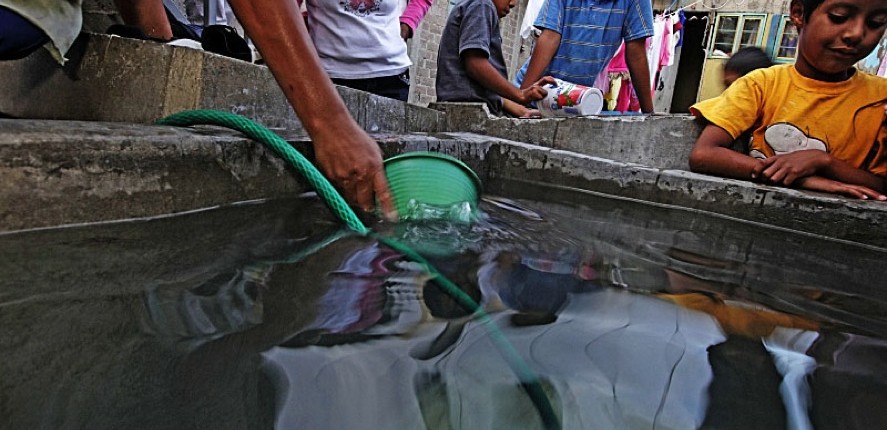
Circle of Blue Reports
Photographs by Janet Jarman/Contact Press Images
Water is an especially serious issue according to Mexicans, particularly the lack of safe drinking water. While they feel somewhat empowered as individuals to address water problems, Mexicans say they need more information. Although they hold government most responsible for community water supply, nearly nine in ten Mexicans think large companies should play a role.
When prompted on eight environmental issues, Mexicans consider fresh water shortages and water pollution to be the most serious. Concern for air pollution, the depletion of natural resources, and loss of animal and plant species are also considered to be serious problems, but to a slightly lesser extent. All Mexicans surveyed agree that it is important for all people to have adequate, affordable drinking water. Ninety-six percent worry that fresh water shortages will become an increasingly severe problem worldwide.
Further, strong majorities demonstrate concern for particular water issues in Mexico. Concern is primarily around the lack of safe drinking water (84 percent are very concerned), lack of water for agriculture (75 percent) and water pollution (71 percent). The cost of water is of far less concern.
When asked who should be held responsible for ensuring clean water in communities, 80 percent of Mexicans believe the government should bear complete responsibility. Mexicans place moderate responsibility on large companies, water companies, and citizens. Not surprisingly, they tend to believe that NGOs, such as environmental advocacy groups, should be held less responsible. While Mexican respondents do not place primary responsibility on large companies and citizens, they do believe that companies need to be a part of the solution (85 percent agree).
A majority of Mexicans indicates that individuals have the ability to contribute to the solution when addressing water shortages. Eighty percent of Mexicans indicate they need more information before they would feel able to help protect water.
Survey analysis provided by GlobeScan in cooperation with Circle of Blue. Download the complete GlobeScan/Circle of Blue Report [pdf].
Mexico: Country Profile
Depending on location and elevation, Mexico’s climate ranges from low-lying tropical coastal plains to arid rocky mountains and deserts. The nation shares more than 4,000 kilometers of borders with the United States, Belize and Guatemala, and twice that is ocean coastline. The bulk of Mexico’s fresh water is used by agriculture, but only about 13 percent of the country’s land is arable. And, while the central and northern states of Mexico house the large majority of the population, these states contain the minority of the country’s fresh water resources. Frequent droughts –- largely exacerbated by climate change –- cause hardships for farmers.
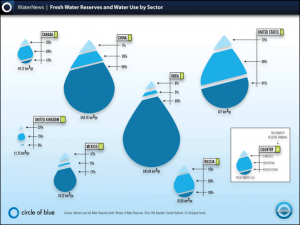 Mexico by the Numbers
Mexico by the Numbers
- Population: 111,211,789
- Population Demography: 77% urban | 23% rural
- GDP per Capita: US $14,200
- Access to Safe Drinking Water: 98% urban | 85% rural
- Access to Sanitation: 91% urban | 48% rural
- Daily Domestic Water Use: 340 L/day
- Water Use by Sector: 17% domestic | 5% industrial | 77% agricultural
To meet the water demands of the world’s 12th largest population, Mexico has invested heavily in desalination, ranking 12th in the world in the number of desalination plants.
The country is struggling to update its archaic urban piping infrastructure in seasonal flood zones, as well as to provide safe water to inhabitants of barren desert bad lands.
Originally built as an island city on Lake Texococo in 1325, Mexico City was radically redesigned by the Spaniards after 1524. In overhauling Mexico City, the Spaniards removed the aqueduct infrastructure, making the city more prone to flooding. To avoid flooding, they subsequently drained the lake, altering the water table.
The city, with a population of more than 19 million people — the third largest metropolis in the world — is still prone to flooding. Due to a high urbanization rate and over-extraction of groundwater, the city is also sinking into its soft clay foundation, adding strain to the antiquated piping system.
Ironically, this formerly water-rich lakeside city now thirsts for new water sources to provide safe drinking water to all of its inhabitants. When the city’s drinking water supply falls short during dry months–from late September through June–water trucks must deliver supplies to meet rural needs. Raw sewage from the plethora of shanty towns, which lack basic sanitation, also pollutes the water.
Additionally, only 48 percent of rural areas in Mexico have access to basic sanitation. Waterborne and vector diseases include malaria, leptospirosis, hepatitis A, cysticercosis, typhoid and dengue fevers, as well as bacterial diarrhea which was solely responsible for five percent of child deaths in 2004.
Circle of Blue provides relevant, reliable, and actionable on-the-ground information about the world’s resource crises.

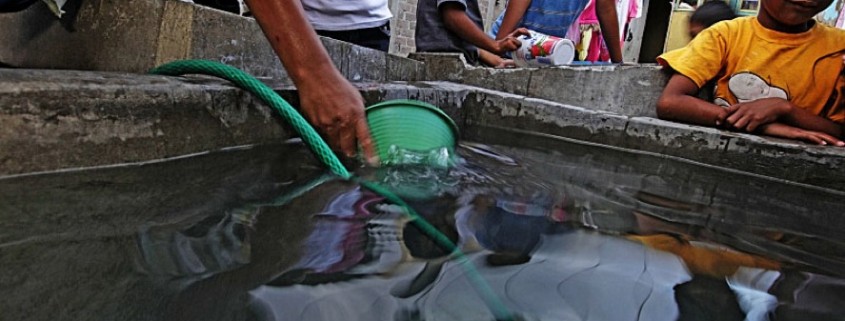
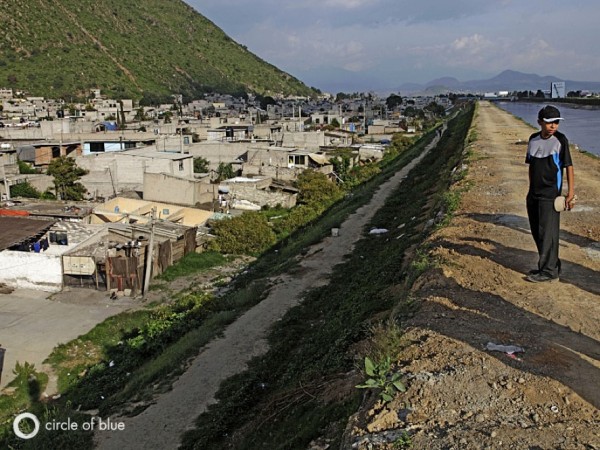

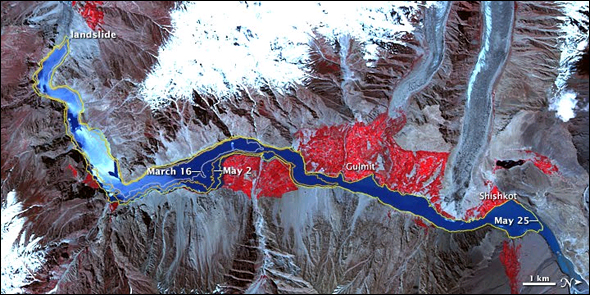

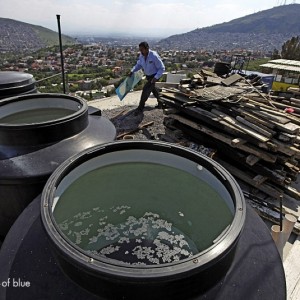
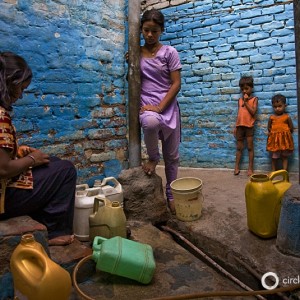
Fascinating and well-researched article.